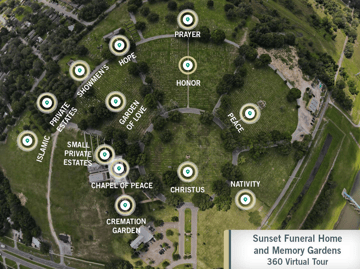 Written by: Christie Nicholas // Jun 8, 2021
Written by: Christie Nicholas // Jun 8, 2021
Last updated: Jun 16, 2021
If you’re a faculty member who taught during the COVID-19 pandemic, chances are you spent hours learning new technology, conducting live online sessions with your students, and adapting your content to the digital environment. Although this rapid change brought many unforeseen and complex challenges, it also resulted in creative ideas and new approaches to ensuring academic continuity. Now that most of us are returning to the (new) status quo, there’s no better time to reflect on the unexpected opportunities and, dare-we-say, innovative digital solutions that emerged as a result of the pandemic.
Lesson 1: Don’t underestimate the value of good course design
Perhaps the most important takeaway from the rapid online shift is that good course design is good course design. As experts in online course design and development, University of South Florida’s Digital Learning team already recognized the value of course design through their partnerships with faculty. With instructors quickly deviating from traditional in-person methods of instruction during the height of the pandemic, course design strategies such as having clear instructions and expectations for communication and interaction became even more critical to student success. Without these essential components in place, which are pillars in traditional online course development, students could easily miss key information or lack clarity on course goals and expectations. In the digital learning environment, basic information like course structure, regular meeting days, technologies utilized, and resources for academic and technical support should be explicitly stated, which was a departure for some faculty used to delivering this information face-to-face. Luckily, many instructors were able to rely on their institution’s support services and customizable templates to quickly address these needs for students. If we’ve learned anything from this past year, it’s that course design matters when creating meaningful learning experiences and should always play a role in any type of digitally-enhanced environment.
Lesson 2: Leverage technology creatively
With technology at the forefront of both online learning and remote teaching, it’s no surprise that lesson two involves creative uses of technology. In traditional online learning, courses are purposefully planned over a defined period of time, carefully considering the content and the various types of interaction that support and facilitate student learning outcomes. Remote teaching, on the other hand, is a temporary shift of instructional delivery that will return to its original method once the emergency has ended. Although the early days of quarantine were mostly spent learning new technologies, some faculty were already pushing the boundaries to ensure students remained engaged and motivated. USF’s Dr. Elizabeth Cass, Instructor and Graduate Coordinator for the College of Behavioral and Community Sciences, leveraged live events in Microsoft Teams to conduct a mock trial where her undergraduate students got hands-on experience interacting with members of the community and serving as jurors in a virtual courtroom.
Another USF instructor, Carlyn Vogel, reimagined several assignments from her Death and Dying course that required students to physically visit a funeral home. Instead, Carlyn partnered with Digital Learning and brought the experience to students by capturing 360-degree video footage where students could explore and interact with specific locations from the site. If  these examples prove anything, it’s that technology should not be viewed as a trivial component of learning. If it could help promote a sense of connectedness and engagement even during a global pandemic, imagine the possibilities and creative uses of technology in post-COVID environments.
these examples prove anything, it’s that technology should not be viewed as a trivial component of learning. If it could help promote a sense of connectedness and engagement even during a global pandemic, imagine the possibilities and creative uses of technology in post-COVID environments.
Lesson 3: Plan for the unexpected
Although this lesson might seem obvious, it’s an important one to address even at the tail end of COVID-19. Whether it’s a global health crisis, a weather emergency (as Floridians, we are no stranger to hurricanes), or simply an unplanned event that keeps you from attending class, it’s safe to say that we’ve all recognized the value of having a solid plan in place. In the digital learning environment, that can equate to having a plan for using your institution’s learning management system (LMS), considering the varying and diverse needs of your students, and planning in advance for technological hiccups. If you were a faculty member who only leveraged the LMS to house your syllabus and grades pre-COVID, hopefully, the rapid online shift introduced you to some of the robust features it has to offer such as rich analytics, timed announcements, collaborative assignments, and feedback comments. Utilizing these features to their full potential and considering the design of the course in advance will make unplanned occurrences much easier to handle. It will also allow you to better monitor student progression throughout your course, and intervene in advance if a student is struggling. And while you’re planning to take better advantage of the LMS, it’s the perfect time to think about your content to ensure that all students have equitable learning experiences. For example, if you’re planning to use multimedia resources such as lecture videos or podcasts, now is the time to ensure that those materials include alternative means of access such as closed captioning, thorough descriptions, and clearly segmented chapters. Although accessibility and usability extend way beyond these suggestions, be sure to check in with your local support services to see how you can better plan for your digital content. Finally, since most of us experienced technological issues over the course of the pandemic, think about how you might try to avoid these in the future. For example, can you conduct dry-runs of your live online sessions and polling activities now to limit potential issues down the road? Now is the time to connect with the appropriate resources at your institution to help you plan for the unexpected.
Lesson 4: Intentionally connect with students
With widespread shelter-in-place orders in effect due to COVID-19, faculty had to be intentional about their connections with students. They had to find quick solutions for promoting class community and opportunities for interaction without relying on in-person visual cues like raised hands and head nods. Synchronous or live online sessions became the norm but this attempt to replicate in-person sessions only went so far. Online sessions had to be optimized for interaction and as the pandemic continued, faculty started embracing strategies like live polling, breakout sessions, and peer evaluation. Others promoted active learning asynchronously through collaborative tools such as Flipgrid (a video discussion platform) and Padlet (a virtual pinboard for organizing and sharing content). All of these strategies invited active learning and promoted connectedness during a time when so many of us needed it.
.png?width=360&name=MicrosoftTeams-image%20(2).png)
In fact, Dr. Rocky Haynes, pre-recorded all of his lecture videos in front of a green screen from his home office. Not only did this approach provide enhanced visualizations of his content, it also personalized his course and provided opportunities for his students to get to know him. Although there is no shortage of creative ideas for connecting and engaging students online, all of these interactions should be planned purposefully and should continue to be utilized regardless of modality.
Lesson 5: Embrace authentic and low-stakes assessments
Perhaps one of the biggest challenges we faced during the shift to remote teaching and then to online delivery was conducting assessments online. With limited time and opportunities to develop authentic and low-stakes assessments, many faculty relied on timed exams and proctoring platforms. Although these were quick solutions to address immediate needs and academic continuity, we quickly realized that there were better ways to assess students in the digital learning environment. Instead of solely relying on summative tests that were used face-to-face, many faculty began incorporating formative assessments to gauge student learning and performance. Digital journals, case studies, peer-to-peer evaluation, and virtual exit tickets starting providing new insights that reduced dependency on timed exams and potential issues with academic integrity. Not only did these solutions provide helpful data to faculty, but they also helped students track their own learning progress throughout the course. Some faculty even promoted quick check-ins and knowledge checks through digital solutions like Kaltura (a media hosting platform) to check the pulse of their students. Regardless of the strategy or technology utilized, these formative approaches should carry on post-COVID in order to provide students with more authentic assessments that better prepare them for the future.
Now that the threat of COVID-19 is slowly decreasing and most faculty are preparing for a more normal fall semester, there’s no better time to reflect upon your own experiences over the past year. Not only will you realize that you were asked to do extraordinary things regarding your instructional delivery, you might also find practical avenues to continue (and even surpass) what you did during the pandemic in order to better meet the needs of today's digital learners.

